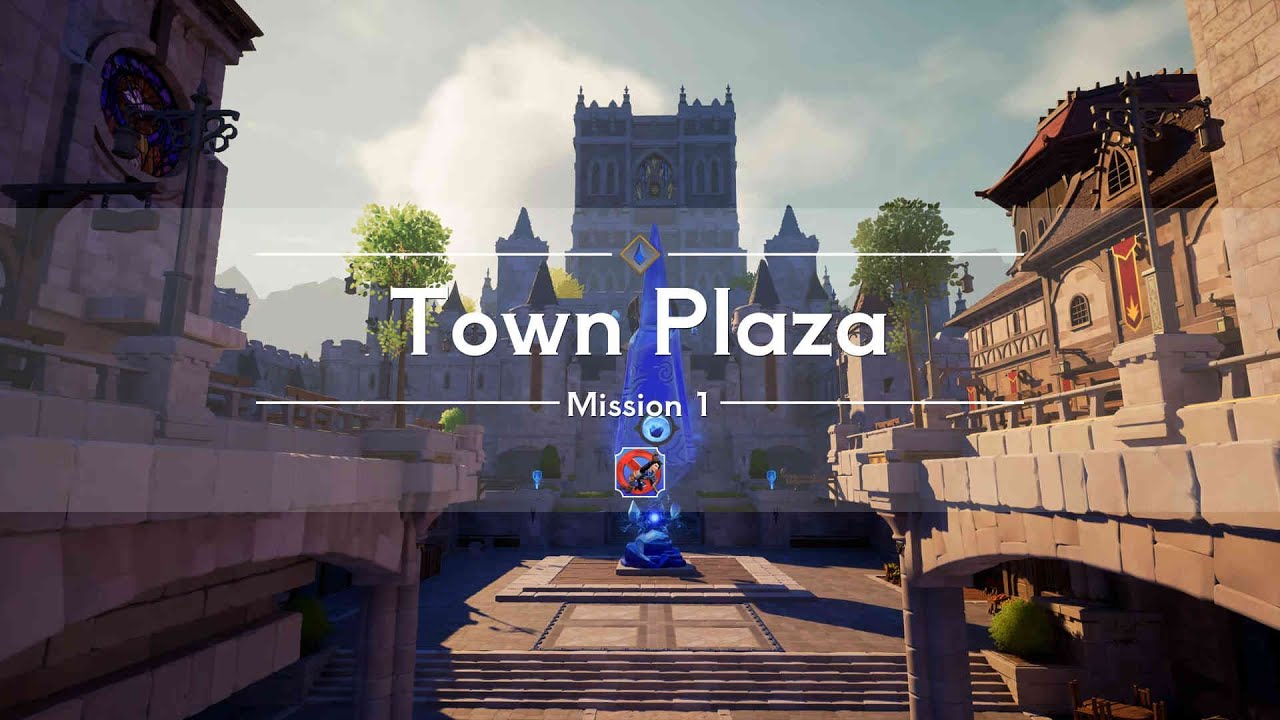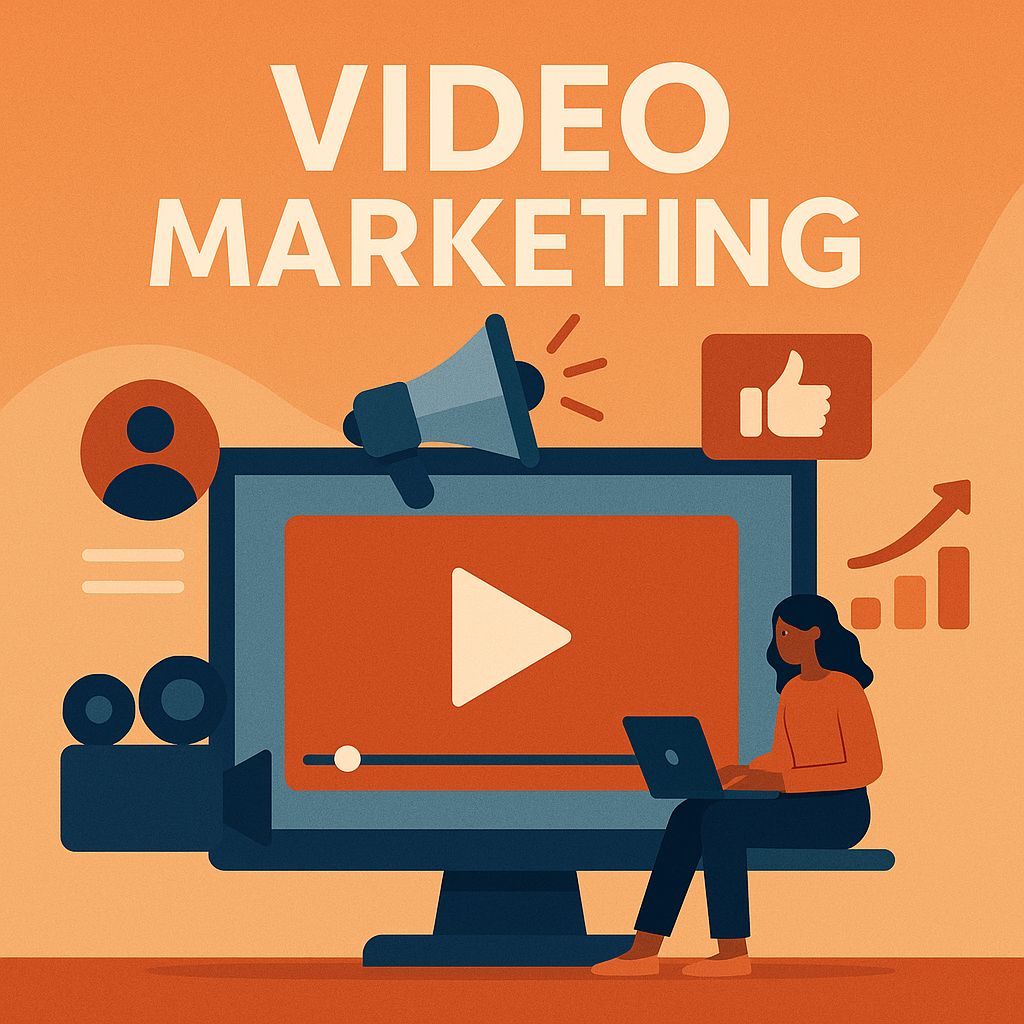Key Takeaways
- High-converting explainer videos focus on customer pain points first, then present your solution as the logical answer—increasing conversion rates by up to 80%.
- The ideal length for conversion-focused explainer videos is 60-90 seconds, with critical messaging delivered in the first 30 seconds.
- Including a strategic call-to-action that appears at precisely the right moment can double your video’s conversion power.
- Videos that balance emotional appeal with educational content convert 43% better than purely informational videos.
- ExplainForce’s research shows that properly placed explainer videos can increase landing page conversions by up to 86% when implemented correctly.
The difference between an explainer video that merely informs and one that drives conversions isn’t subtle—it’s measurable in dollars. While 76% of marketers use video content, only 33% report significant ROI from their explainer videos. The gap isn’t about production quality or even creativity—it’s about strategic conversion psychology.
Explainer videos sit at a critical junction in your marketing funnel. They’re not just content; they’re conversion tools that should be engineered with the same precision as your sales pages. ExplainForce helps businesses transform their video strategy from passive explanation to active conversion, recognizing that the most effective videos don’t just explain—they persuade, engage, and convert.
Let’s get real about what’s actually working in 2023, leaving behind outdated video marketing tactics that waste both time and budget.
The Hard Truth: Why Most Explainer Videos Fail to Convert
The Conversion Gap: The average explainer video gets watched for 2.7 minutes but generates only a 1.5% click-through rate. High-converting videos achieve 12-15% CTR with the same watch time. The difference isn’t length—it’s strategic design.
Most explainer videos suffer from what I call “feature overload syndrome.” They ramble about product specifications instead of addressing the viewer’s burning question: “What’s in it for me?” When your video starts with your company history or lists features without context, you’ve already lost the conversion battle before it begins.
Another fatal flaw is the absence of emotional triggers. Neuroscience research confirms that purchase decisions are primarily emotional, yet most explainer videos focus exclusively on logic. Without emotional engagement, even the most informative video becomes forgettable—and forgettable doesn’t convert.
Perhaps most damaging is the misconception that explainer videos are primarily educational tools rather than conversion assets. This mindset leads to videos that explain everything perfectly but fail to guide viewers toward the next step in your funnel. Education without direction is just entertainment.
The most insidious problem? Generic messaging. When your explainer video could be about any company in your industry with just a logo swap, you’re essentially creating background noise. Conversion happens when viewers feel you’re speaking directly to their unique situation. For a tailored approach, consider exploring top-rated explainer video agencies that specialize in crafting unique messages.

What Makes Explainer Videos Actually Drive Sales?
The explainer videos that consistently drive sales follow a different playbook—one built on conversion psychology rather than conventional video production wisdom. They operate as micro-sales conversations, not just animated brochures.
High-converting videos don’t just present information; they create a gap between the viewer’s current state and their desired outcome, then position your solution as the bridge. This tension-resolution pattern mirrors how our brains process stories and make decisions. To see how this works in practice, check out these business explainer videos that effectively convert viewers.
They Speak Directly to Customer Pain Points
Videos that convert don’t begin with “We are XYZ company.” They start with “You know that frustration when…” The difference is subtle but powerful. By immediately acknowledging specific pain points—using the exact language your customers use—you create instant resonance. This isn’t just theoretical; eye-tracking studies show that viewer attention spikes 27% when real pain points are addressed in the first 10 seconds.
Effective videos articulate the problem better than viewers could themselves, creating the “they understand me” moment that builds the foundation for conversion. This problem articulation should be specific enough that some viewers will strongly identify while others might not—that’s the point. Conversion increases when messaging targets your ideal customer precisely, not when it attempts to speak to everyone.
They Follow a Proven Psychological Framework
Converting explainer videos aren’t random collections of information—they’re carefully structured persuasion tools. The most effective ones follow the Problem-Agitation-Solution (PAS) framework or the Attention-Interest-Desire-Action (AIDA) model. This isn’t arbitrary; these frameworks mirror how our brains process information and make decisions. For more insights on creating impactful videos, check out these custom animated explainer videos that can boost sales.
When properly executed, these psychological frameworks create a narrative flow that makes conversion feel like a natural conclusion rather than a forced action. The key is seamless transitions between stages—moving from problem to solution should feel like an “aha” moment for the viewer, not a jarring shift to sales mode.
They Balance Education with Emotional Appeal
Conversion-focused videos strike the perfect balance between rational and emotional appeals. While your explainer needs to educate viewers about your solution, the information must be wrapped in emotional context. Videos that incorporate storytelling elements convert 22% better than strictly informational ones because they engage both the logical and emotional centers of the brain.
This balance shows up in both script and visuals. For example, rather than merely stating that your software saves time, high-converting videos show a frustrated person before using your product, then the same person accomplishing more and feeling satisfied after implementation. This before/after emotional contrast drives conversion more effectively than statistics alone ever could.
They Include a Clear, Compelling Call-to-Action
The most informative explainer video is worthless from a conversion standpoint if it doesn’t tell viewers exactly what to do next. High-converting videos don’t just end—they conclude with a specific, compelling call to action that feels like the logical next step. This CTA should be both verbal (mentioned in the script) and visual (appearing on screen), creating multiple pathways to conversion. For more insights on crafting effective CTAs, explore our custom animated explainer videos that boost sales.
Timing matters tremendously. Testing shows that introducing your CTA after you’ve presented the core benefits but before the video ends results in 25% higher click-through rates than saving it for the final frame. This timing takes advantage of the emotional peak created by your solution presentation.

7 Essential Elements of High-Converting Explainer Videos
1. A Hook That Grabs Attention in 8 Seconds
You have approximately 8 seconds to convince viewers your video is worth watching before they scroll away. Effective attention hooks don’t waste time with logos or generic greetings—they dive straight into something unexpected, provocative, or directly relevant to the viewer’s pain point. Questions, surprising statistics, or emotionally resonant scenarios all make effective hooks. For more insights on creating impactful videos, explore how explainer videos can sell your software.
The most successful hooks create what psychologists call an “open loop”—an unresolved tension that the viewer needs to see completed. When your opening line is “There are three reasons most businesses lose customers without ever knowing why,” viewers are compelled to continue watching to close that information gap.
2. Problem Framing That Resonates with Viewers
How you frame the problem dramatically impacts conversion rates. Generic problem statements like “managing your data can be challenging” won’t convert. Specific framings like “spending 12 hours every month manually reconciling customer data across three different systems” creates immediate recognition for those experiencing that exact pain. For more insights on how to effectively communicate your software’s value, explore our guide on explainer videos that sell your software.
The art of problem framing involves making the pain feel both urgent and solvable. If you present the problem as too catastrophic, viewers become overwhelmed; too trivial, and there’s no motivation to change. The sweet spot is framing it as a significant but solvable challenge that’s actively holding them back from their goals.
3. Solution Presentation That Feels Like a Discovery
The transition to your solution should feel like a revelation, not an advertisement. High-converting videos don’t just announce their product—they lead viewers to discover it as the logical answer to the problems just established. This discovery moment is crucial for conversion because it transforms your solution from an interruption into a welcome answer.
Effective solution presentations focus first on outcomes, then mechanics. Explain what becomes possible with your solution before detailing how it works. This outcomes-first approach keeps viewers engaged through the more technical aspects of your explanation because they already understand the value proposition.
4. Visual Storytelling That Simplifies Complex Concepts
The visual component of explainer videos isn’t just about aesthetics—it’s a powerful conversion tool when used strategically. Effective visual storytelling uses metaphors, comparisons, and simplified representations to make complex concepts immediately graspable. The faster viewers understand your solution, the more likely they are to convert. Discover how explainer videos can sell your software by making complex ideas clear and engaging.
Animation style should match your conversion goals. Abstract concepts often convert better with simple 2D animation that reduces cognitive load, while physical products might benefit from 3D or live-action approaches that showcase real-world application. The key is choosing visuals that clarify rather than complicate your message.
5. Brand Voice That Builds Trust
Conversion depends on trust, and your explainer’s voice—both the literal voiceover and the overall tone—significantly impacts trust formation. The most effective explainer videos sound like a knowledgeable friend, not a corporate presentation or an overexcited sales pitch. This conversational authenticity builds the credibility necessary for conversion. Learn more about how top-rated explainer video agencies can help craft that perfect tone.
Voice selection should align with your target audience’s expectations. A mismatch between voice and brand positioning creates cognitive dissonance that undermines conversion. For example, a financial security product using a very young, casual voice may unconsciously trigger trust concerns that prevent conversion, even if the content is solid.
6. Social Proof That Eliminates Skepticism
Incorporating social proof into your explainer video can increase conversion rates by up to 35%. Strategic placement of testimonials, case study snippets, or even simple customer logos provides the reassurance viewers need before converting. The most effective approach interweaves social proof naturally rather than segregating it into a dedicated “testimonials” section that viewers might mentally tune out. For more insights, explore how custom animated explainer videos can enhance your strategy.
The most persuasive social proof is specific and relevant to the benefits you’re highlighting. General praise like “Great company!” converts poorly compared to specific outcomes like “We increased sales by 27% within 60 days of implementation.” This specificity makes the claimed benefits feel concrete and achievable, addressing the skepticism that often prevents conversion.
7. Strategic CTA Placement and Design
Conversion optimization testing reveals that explainer videos with multiple, strategically timed CTAs convert 16% better than those with a single end-screen CTA. The first CTA should appear after you’ve established the problem and introduced your solution—around the 45-second mark in a 90-second video. This timing catches viewers who are ready to convert without waiting for additional details.
The language of your CTA dramatically impacts conversion rates. Generic phrases like “Learn More” or “Contact Us” severely underperform compared to benefit-focused alternatives like “Start Saving Time Today” or “Get Your Custom Strategy.” The most effective CTAs reference the specific value proposition established in the video, creating continuity between explanation and action.

Case Study: Before and After Conversion Metrics
SaaS Company Conversion Transformation
Before: Generic explainer video with 1.2% conversion rate
After: Conversion-optimized video with 7.8% conversion rate
Key Changes: Problem-focused opening, emotion-driven storytelling, dual CTAs, mobile optimization
When e-commerce platform Shopify Partners revised their explainer video to focus on specific merchant pain points rather than platform features, they saw a 340% increase in trial signups from video viewers. The new video spent 40% of its runtime articulating problems before introducing solutions—compared to just 10% in their previous version.
Financial technology startup ClearPath experienced similar results when they replaced their technical explainer with a story-driven version. While both videos contained essentially the same information, the narrative approach generated 89% more qualified leads. The key difference? The revised video framed every feature in terms of emotional benefits rather than technical capabilities.
A particularly instructive case comes from project management tool Monday.com, whose explainer video conversion rate jumped from 3.2% to 11.7% after restructuring to follow the Problem-Agitation-Solution framework. Their revised video dedicated more time to showing real user frustrations with competing solutions before introducing their platform as the remedy—creating the emotional contrast necessary for high conversion.
Common Mistakes That Kill Your Video’s Conversion Power
Information Overload: The Conversion Killer
The impulse to showcase every feature and benefit in your explainer video actively works against conversion. Cognitive research shows that viewers can retain approximately 3-4 key points from a video. When you present 10+ features, not only do viewers retain less overall, but they also fail to grasp your core value proposition—the foundation of conversion.
High-converting explainer videos focus ruthlessly on the 2-3 most compelling benefits for their target audience, developing those thoroughly rather than creating a feature laundry list. This focused approach feels counterintuitive to many marketers who want to communicate “complete” value, but conversion data consistently shows that less information, more deeply explored, drives higher conversion rates.
Generic Messaging That Speaks to No One
The effort to make explainer videos appeal to everyone typically results in messaging that resonates with no one. Videos using generic language like “businesses of all sizes” or “anyone who wants to improve efficiency” convert poorly compared to those targeting specific personas with specific language. Conversion thrives on specificity—even at the cost of narrower appeal.
The solution is developing viewer personas and crafting messaging that speaks directly to their industry-specific challenges, using their terminology and referencing scenarios they immediately recognize. This specificity might seem limiting, but it dramatically improves conversion rates among your target audience—the only metric that ultimately matters.
Poor Production Quality That Damages Credibility
While premium production isn’t necessary for conversion, there is a minimum quality threshold below which viewers question your credibility. Audio quality proves particularly crucial—studies show that viewers are more tolerant of mediocre visuals than poor sound, which they associate with unprofessionalism. This perception directly impacts conversion willingness.
The production elements that most impact conversion are pacing, audio clarity, and visual consistency. These elements affect how easily viewers can process your message, which directly correlates with conversion probability. Investing in these fundamental quality aspects yields better conversion returns than spending on flashy but unnecessary visual effects.
Neglecting Mobile Viewers
With over 63% of video views now occurring on mobile devices, failing to optimize your explainer for small screens significantly undermines conversion potential. Mobile optimization goes beyond technical compatibility—it requires design choices that enhance comprehension on smaller displays. Text must be larger, visuals simpler, and key information emphasized through zooms or highlights. Consider exploring affordable custom videos for mobile apps to ensure your content is effectively reaching mobile audiences.
The most critical mobile optimization factor for conversion is ensuring your CTA remains clearly visible and easily clickable on small screens. Videos with mobile-optimized CTAs convert up to 56% better on smartphones compared to those using standard desktop CTAs simply scaled down. This seemingly small detail can represent the difference between conversion success and failure.

The Optimal Length for Conversion-Focused Videos
Contrary to popular assumptions about shrinking attention spans, the optimal length for conversion isn’t “as short as possible”—it’s “as long as necessary, but no longer.” For most B2B products and complex services, 90-120 seconds provides sufficient time to establish problems, present solutions, and motivate action without losing viewer engagement.
More important than total length is how you use the first 30 seconds. Conversion data shows that videos delivering key value propositions within this window convert 38% better than those that delay these messages, regardless of overall length. This front-loading approach ensures that even viewers who don’t watch to completion still absorb your core conversion message. For more insights, check out how custom animated explainer videos can boost your sales.
For complex offerings requiring longer explanation, consider creating a series of interconnected shorter videos rather than one extended explainer. This segmentation allows viewers to self-select into the information most relevant to their specific needs—increasing both engagement and conversion probability compared to forcing all viewers through the same lengthy sequence.
Best Placement Strategies for Maximum Impact
Homepage Placement Tactics
Homepage video placement testing reveals that above-the-fold embedding increases play rates by 72% compared to below-the-fold placement, but conversion optimization is more nuanced than simply putting your video at the top. The most effective homepage strategy uses a compelling thumbnail and headline above the fold, but embeds the actual video slightly down the page after establishing initial context.
This “primed placement” approach gives visitors just enough information to become interested before encountering the video, creating intentional engagement rather than passive autoplay viewing. Intentional viewers convert at rates 3-4x higher than those who watch automatically playing videos, making this strategic placement more valuable than merely maximizing play counts.
- Use a custom thumbnail showing a clear benefit or intriguing question
- Place a short benefit statement directly above the video
- Add a play button overlay that stands out visually
- Include a brief “what you’ll learn” text beside the video
- Follow the video with a directly related CTA button
The element that most impacts homepage video conversion is what immediately follows the video. Placing a contextually relevant form or button that directly relates to the video’s content creates a natural action path that significantly outperforms generic site navigation for conversion purposes.
Landing Page Integration
Landing Page Video Placement Test Results
Top of Page: 82% play rate, 2.3% conversion rate
Mid-Page After Benefits: 61% play rate, 4.7% conversion rate
After Pain Points, Before Solution: 74% play rate, 6.2% conversion rate
Landing page video placement should be determined by your primary conversion goal. For immediate conversions like trial signups or purchases, placing your video after establishing initial interest but before revealing all solution details creates information hunger that the video satisfies—driving viewers toward conversion to experience the complete solution.
For lead generation landing pages, video placement after form fields counterintuitively increases conversion by positioning the video as a reward for submission. This “video-as-incentive” approach has shown 23% higher form completion rates in A/B testing compared to pre-form video placement, particularly for longer forms where completion motivation becomes crucial.
The landing page context surrounding your video dramatically impacts its conversion power. The most effective integration creates a coherent narrative where the page introduces a problem, the video develops that problem and presents your solution, and the following page elements facilitate immediate action. This narrative continuity prevents the disconnection that often occurs when videos feel like standalone elements.
Email Campaign Embedding
Email-embedded videos (or more commonly, video thumbnails linking to landing pages) generate 200-300% higher click-through rates than standard text emails. However, maximizing conversion from these clicks requires careful alignment between email messaging and video content. The most effective approach creates a “conversion story” that begins in the email and continues seamlessly in the video.
When embedding video thumbnails in email campaigns, those with play buttons superimposed on benefit-focused imagery consistently outperform generic video thumbnails. The thumbnail should function as a mini-advertisement for the video itself, communicating a specific value proposition that compels viewers to click and continue the conversion journey.
- Use the word “video” in your email subject line (increases open rates by 19%)
- Keep email copy brief with clear indication of video content
- Design thumbnail with result-focused imagery
- Include video length to set viewer expectations
- Send viewers to a dedicated landing page, not just the video itself
The email-to-video-to-conversion path should feel like a single continuous experience rather than disjointed steps. Maintaining consistent messaging, visuals, and tone across these touchpoints creates the cohesive experience necessary for maximum conversion effectiveness.
Social Media Optimization
| Platform | Optimal Length | Key Conversion Element |
|---|---|---|
| 45-75 seconds | Professional problem statement in first 10 seconds | |
| 60-90 seconds | Emotional hook with captions (85% watched without sound) | |
| 30-45 seconds | Visually-driven problem/solution with text overlay | |
| YouTube | 90-180 seconds | SEO-optimized title and comprehensive description |
Social media platforms require platform-specific optimization for maximum conversion. The highest-converting approach is creating platform-adapted versions of your core explainer rather than posting identical content across all channels. These adaptations should preserve your key messaging while embracing each platform’s unique viewing context and user expectations.
Facebook and Instagram viewers respond best to videos that communicate effectively without sound, as 85% of views occur with audio disabled. Conversion optimization for these platforms requires prominent captions or text overlays that carry your core message visually. Videos designed with this “sound-off” experience in mind convert up to 67% better than those requiring audio for comprehension.
LinkedIn viewers engage most deeply with videos that establish professional credibility within the first 10-15 seconds through data points, industry insights, or clear problem statements relevant to business challenges. This platform-specific approach to opening content increases both completion rates and conversion actions compared to general-purpose video introductions.

How to Measure Your Explainer Video’s Conversion Success
Effective measurement goes far beyond view counts to track the specific conversion actions that generate business value. The first step is establishing clear attribution by creating dedicated tracking links for your video CTAs and implementing event tracking that distinguishes video-influenced conversions from other sources.
The video metrics most predictive of conversion are engagement depth (what percentage watched), engagement patterns (where viewers rewatch or drop off), and conversion path (what actions viewers take after watching). These metrics reveal not just if your video converts, but why—providing actionable insights for optimization rather than just performance data. For businesses looking to enhance their marketing efforts, exploring how to boost sales with custom animated explainer videos can be a valuable strategy.
Platform analytics often provide incomplete conversion pictures. Integrating your video hosting platform with your CRM and marketing automation systems creates the comprehensive tracking environment necessary for accurate attribution. This integration allows you to follow viewers from initial play through the entire conversion journey, revealing your video’s true impact. For more insights, explore how explainer videos can sell your software.
- Play-to-registration rate: Percentage of viewers who register after watching
- Viewer-to-MQL conversion: Viewers who become marketing qualified leads
- Attribution influence: How video viewing impacts conversion probability
- Engagement segmentation: How watch patterns correlate with conversion
- Drop-off conversion impact: Identifying critical retention points
The most sophisticated conversion analysis examines not just if viewers convert, but how video watching changes their conversion behavior. For example, do video viewers convert faster, select higher-tier offerings, or require less sales support? These downstream impacts often represent your video’s most significant conversion value.
Key Metrics Beyond View Count
The metrics that most directly correlate with conversion effectiveness are engagement rate (percentage watched), interaction rate (clicks on in-video elements), and post-view behavior flow (navigation paths after watching). Tracking these metrics against conversion outcomes reveals optimization opportunities much more effectively than simply measuring total views or play rate, which have surprisingly little correlation with actual business results.
A/B Testing for Continuous Improvement
Systematic A/B testing of explainer videos consistently yields conversion improvements of 30-50% over initial versions. The elements most worth testing are opening hooks (first 10 seconds), CTAs (both language and timing), and problem framing (how you articulate pain points). Creating variants that isolate these specific elements allows you to identify which conversion levers have the greatest impact for your specific audience and offering.
Turn Your Viewers into Customers Today
The difference between explainer videos that merely explain and those that actively convert isn’t mysterious—it’s methodical. By implementing the strategic framework outlined here, you can transform your video from a passive information tool into an active conversion asset that measurably drives business results.
ExplainForce helps businesses create explainer videos that don’t just inform viewers but guide them naturally toward becoming customers through proven conversion psychology and strategic implementation.





